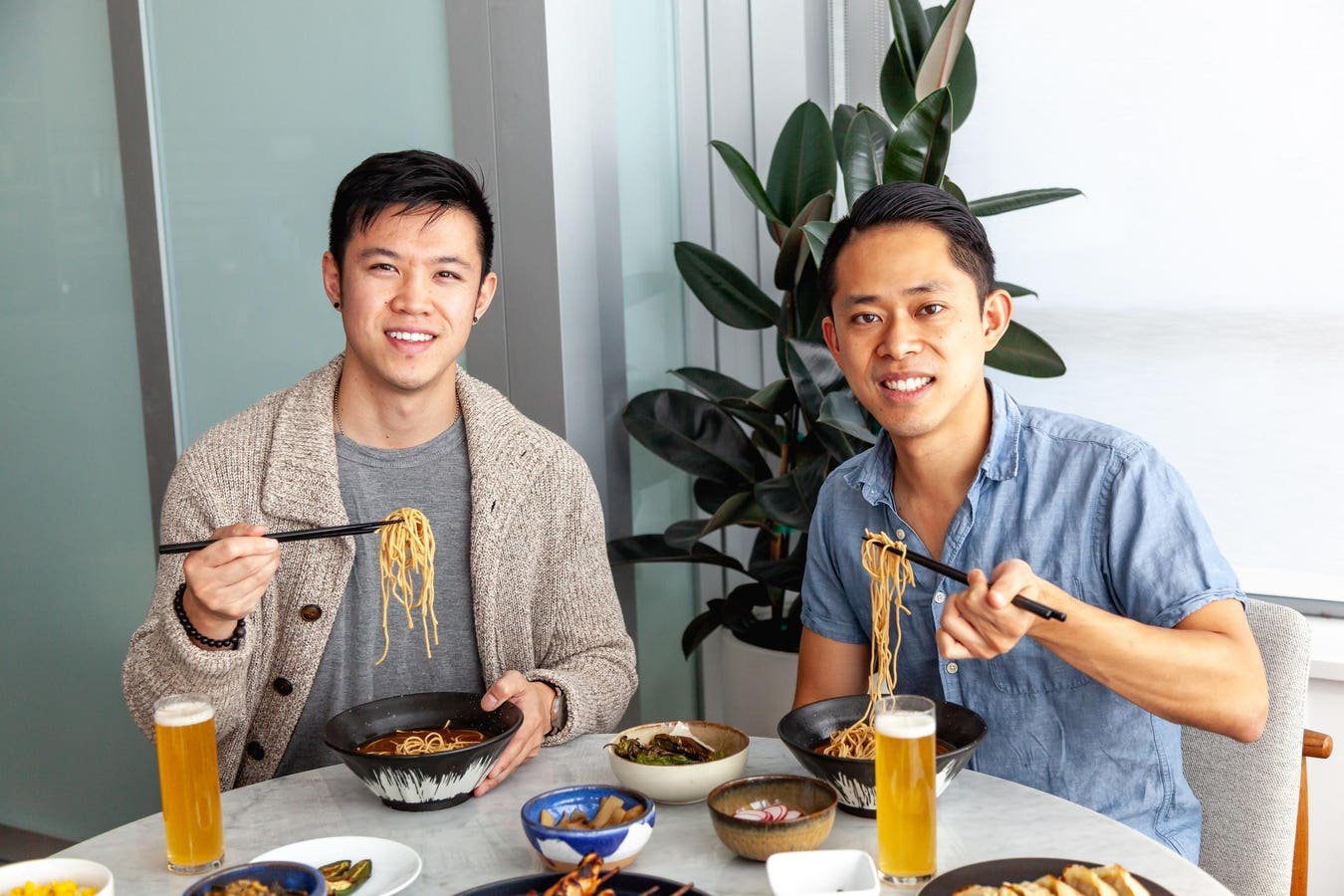Kevin Lee, co-founder of healthy ramen brand immi, knows he got lucky.
The company, which raised $10M in funding last year from super star investors like Naomi Osaka and Usher, will be available in 3,000 retail doors this year — a rapid ascent for a brand that’s only three years old.
Lee, along with his cofounder Kevin Chanthasiriphan, have certainly put in the hard yards to make their mission-driven company a success. Major manufacturing partnerships have failed, initial product formulations were unpalatable, and the brand has had to invest significantly in educating consumers — and retailers — on the emerging category. Without the typical founder grit, it would have been impossible to achieve this outcome.
But while tenacity has been a necessary ingredient, Lee also recognizes that a convergence of cultural trends have also thrust immi into a position of strength. Here are some of those tailwinds and how Lee and Chanthasiriphan harnessed them to thrust immi forward.
Tailwind 1: COVID
The pandemic brought about a heightened awareness of health and well-being, with people becoming more conscious of their dietary choices. Immi, being a healthier, high-protein, and low-carb alternative to its traditional instant ramen counterpart, found product-market fit during this shift. The brand’s focus on healthful ingredients appealed to the growing segment of consumers looking for comforting yet nutritious food options during a stressful time.
It also helped that immi was born as a DTC brand, ensuring products were available to people who wanted to order from home.
“COVID was really the first global pandemic that propelled not just online food shopping, but just this understanding that if you don’t take care of your health or you develop these chronic health conditions, you’re more predisposed to succumbing to COVID or future pandemics,” Lee says.
Indeed, it is Kevin Lee and his cofounders experience with chronic disease that was the catalyst for creating immi. Kevin shares that the idea was initially conceived “for our families and for ourselves,” highlighting a personal intention behind immi. This notion is further emphasized by their focus on addressing the dichotomy many face: the desire to indulge in beloved foods like ramen without compromising health.
Lee says that high blood pressure and diabetes runs in his family. Both conditions were found to significantly increase the risk of in-hospital mortality of COVID-19. This led Lee and Chanthasiriphan, whose families are immigrants from Taiwan and Thailand respectively, toward a strong personal mission: make the Asian comfort food they grew up with healthier.
“We kept thinking, ramen is a delicious food. But people don’t want to feel guilty or develop chronic health conditions later in life from eating this stuff. So initially we created this really for our families and for ourselves, like a better version of instant ramen.”
Tailwind 2: Emerging Asian influence on American pop culture
Recent years have seen a surge in interest in Asian culture. Blockbuster movie hits like “Crazy Rich Asians,” “Parasite,” and the widespread popularity of shows like “Squid Game” and the global phenomenon of K-pop elevated Asian culture in the Western consciousness. This surge in interest naturally extended to Asian foods, including ramen.
Lee recounts a story of a Caucasian school teacher from the Midwest, who, during the pandemic, discovered Korean dramas on Netflix while schools were shut down. This exposure led her to develop an interest in ramen, a common sight in Korean dramas. This eventually drove her to search for healthier ramen options online, leading her to immi.
“In the show, they kept eating this thing called ramen, which she actually did not have much exposure to,” Lee says. “But she has health conditions. So she typed ‘healthy ramen’ in Google and we were the first to show up.”
Lee also says that many buyers at conventional grocery stores are telling him that the Asian food category and Asian flavors are one of their fastest-growing product segments.
“Media and Hollywood are actually influencing someone’s palate,” Lee says.
Tailwind 3: Ozempic and GLP-1 agonists
The rise of GLP-1 agonist drugs such as Ozempic, initially designed for type 2 diabetes management and recently gaining popularity for weight loss, indirectly serves as a significant tailwind for immi.
While GLP-1 drugs generally reduce cravings for unhealthy foods and large meals, so they seek out smaller and more nutritious alternatives. Health professionals also encourage those meals to be high in protein, to stave off muscle loss.
Goldman Sachs Research published in March this year predicts that the number of Americans treated with GLP-1 therapies will triple to 30 million by 2028, with upside to as many as 70 million.
“It is like creating this super fast growing cohort of customers, Lee says. ”And these are not just folks who perhaps are diabetic or overweight. These are people who have high discretionary income. They’re looking for smaller, convenient, nutrient dense meals. And that really is perfect for immi because we’re this low carb, high protein, high fiber, lower calorie, convenient meal all in one.”
First mover advantage
It is the founders’ ability to recognize and capitalize on these trends that has provided immi its great foundation of growth. But big CPG brands are also taking notice.
CPG manufacturers are introducing product variations with Asian flavor profiles. Mexican spicy chip brand Takis launched its asian-inspired ‘Dragon Sweet Chili’ flavor in 2023. And last month, Del Monte Foods announced a major expansion of its JOYBA bubble tea business in response to growing demand.
On the Ozempic front, Nestle launched a frozen meal line called Vital Pursuit last month specifically to address the fast-growing cohort of GLP-1 users. Lee says it was validating when they saw this. In one sense, a rising tide could lift all ships. But it also brings in a new form of competition for immi.
Lee believes that immi’s mission is part of what will keep customers coming back. “A lot of people now really believe in the mission. They love the founding story,” he says. “They want to support a company that’s putting out a more nourishing form of a product that they’ve always loved eating. And it’s something they would be proud to give to their families.”
Read the full article here





